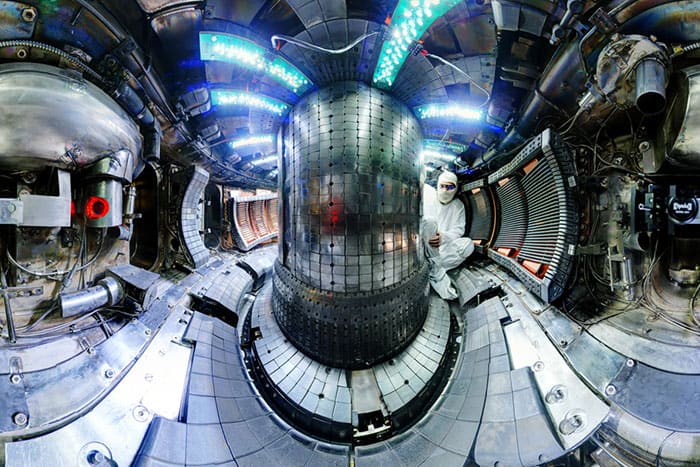Flash Physics is our daily pick of the latest need-to-know developments from the global physics community selected by Physics World‘s team of editors and reporters

Mapping the universe’s superclusters and voids
Astrophysicists in the UK have created the largest ever map of voids and superclusters in the universe, which they say helps solve a long-standing cosmological mystery. The team, based at the University of Portsmouth, have mapped the positions of cosmic voids – large empty spaces that contain relatively few galaxies – and superclusters – huge regions with many more galaxies than normal. Lead author Seshadri Nadathur says their new technique allowed them to “make a very precise measurement of the effect that these structures have on photons from the cosmic microwave background (CMB)” as they pass through the structures. According to Nadathur, the photons are affected by the “stretching effect of dark energy”, which causes tiny changes in the temperature of CMB light depending on where it came from. Indeed, photons travelling through voids should appear slightly colder than normal and those navigating through superclusters should be hotter. This effect – known as the integrated Sachs–Wolfe (ISW) effect – has been previously studied, but early maps of the supercluster and void structure seemed to suggest that the effect was five times greater than the predicted value. The Portsmouth team’s new dataset – which used nearly a million galaxies from the Sloan Digital Sky Survey – is much larger. They also created a new statistical technique to be able to measure the ISW effect on the CMB data, as the effect was negligible. This allowed the team to make a very precise measurement of the ISW effect, and they found that the new result agreed extremely well with predictions using Einstein’s theory of general relativity. The work is published in The Astrophysical Journal Letters.
Plasma pressure record set for fusion

A new world record for the highest plasma pressure created within a tokamak fusion reactor has been set by Earl Marmar and colleagues working on the Alcator C-Mod facility at the Massachusetts Institute of Technology (MIT). Achieving a high plasma pressure is crucial to the development of practical fusion reactors because the amount of power output by a reactor scales as the square of the plasma pressure. The MIT team achieved a plasma pressure of 2.05 atm within a space of 1 m3 – smashing the previous record of 1.77 atm, which was set by Alcator C-Mod in 2005. The plasma temperature reached more than 35 million Kelvin, which is twice as hot as the centre of the Sun. The plasma produced 300 trillion fusion reactions per second, but much more work must be done before fusion reactors become a viable source of clean energy.
Physicists predict rogue ocean waves

Mariners have long known that certain parts of the sea are prone to extremely high rogue waves, which are more than twice the size of the surrounding waves. Now, physicists in Germany have made some progress towards predicting when these rare and dangerous wave will occur. Günter Steinmeyer at the Max Born Institute in Berlin and colleagues from the Leibniz University in Hannover and the Technical University in Dortmund have developed a new way of measuring the number of waves that interfere at specific locations in the ocean, and have shown that it can be used to alert mariners when sea conditions are right for the emergence of rogue waves. Measuring the “phase space dimension” metric can be done on board a ship, so it could provide an early warning of dangerous seas. In the future, the metric could be combined with meteorological data to provide forecasts of rogue conditions.
- You can find all our daily Flash Physics posts in the website’s news section, as well as on Twitter and Facebook using #FlashPhysics. Tune in to physicsworld.com later today to read today’s extensive news story on a new frequency comb sensor.



